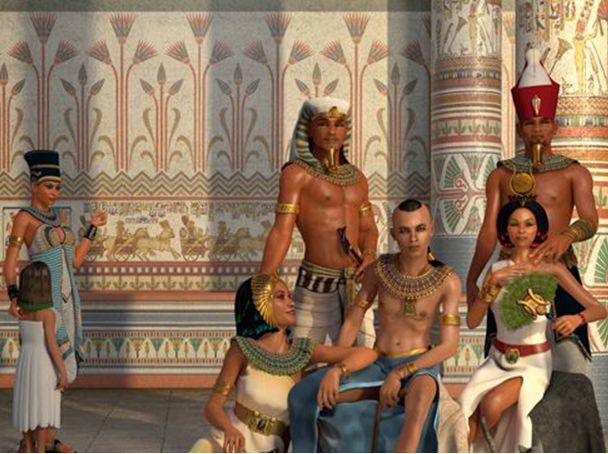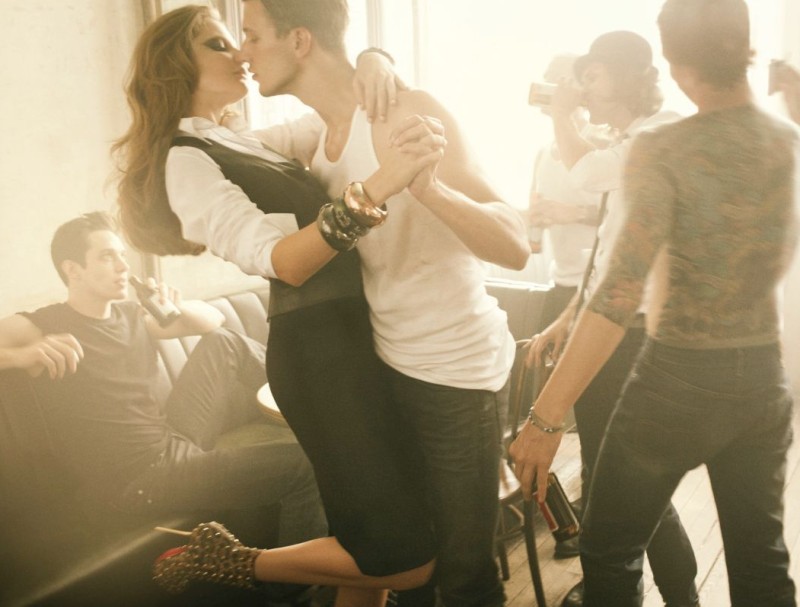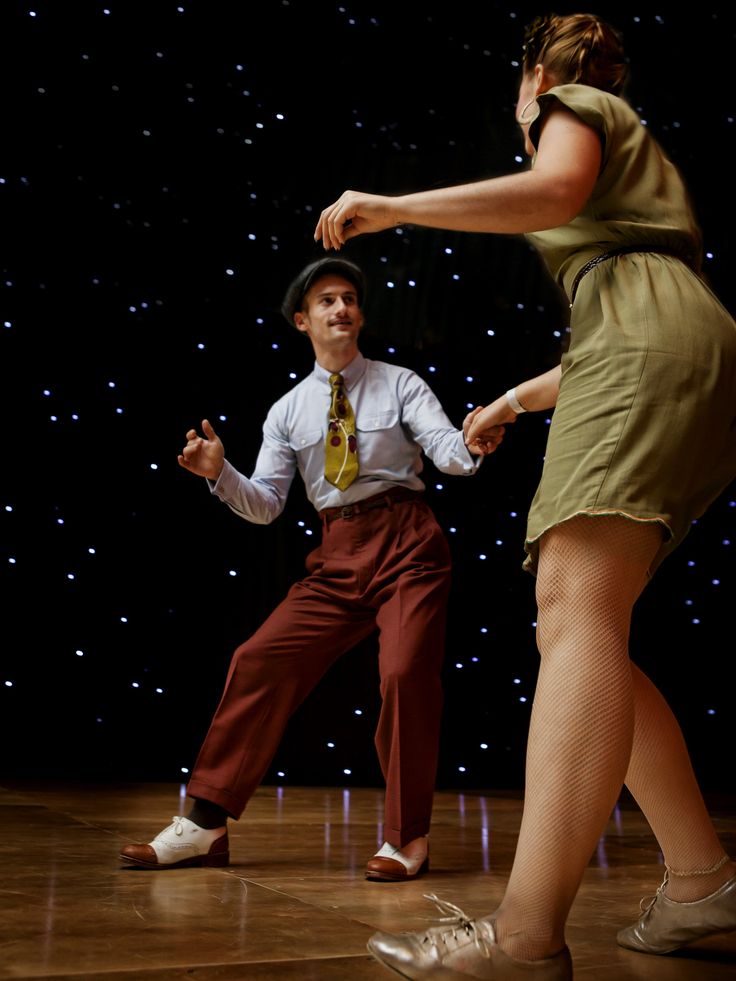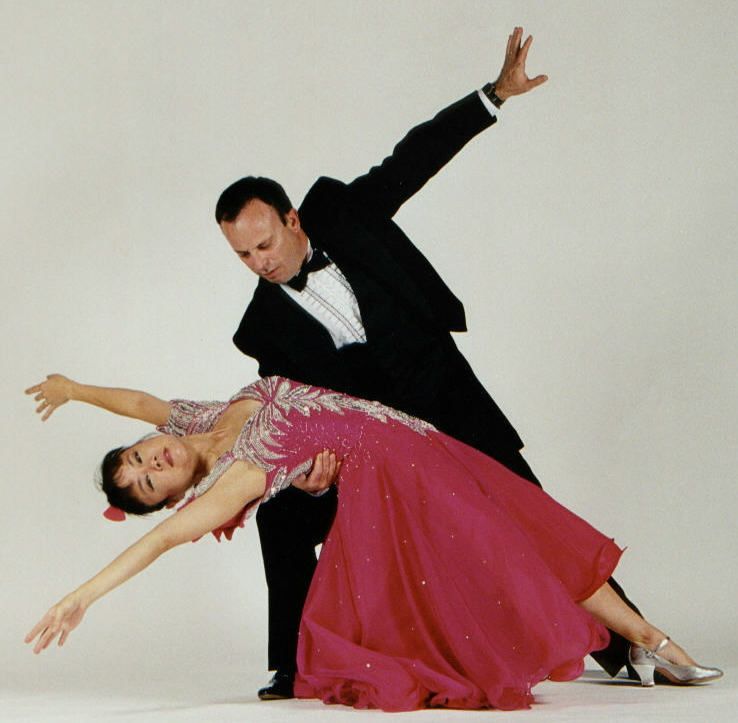How to dance egyptian
In Egypt, Foreigners Dominate Belly Dancing
When Lurdiana Tejas began watching belly dancing on TV as a young girl in northern Brazil, she never thought this passion would take her to the dance halls of Cairo, where she would become an internationally renowned star.
By most measures, Tejas has “made it.” She performs at some of the most prestigious venues in Egypt, is in constant demand to dance at the weddings of the elite and has over 2.5 million followers on Instagram.
Yet even the most successful belly dancers like Tejas occupy a complex position in Egyptian society. Belly dancing was once dominated by Egyptian household names and synonymous with stardom. This, however, has changed over the past three decades. With the growth of religious conservatism and the end of the golden age of cinema, belly dancing ceased to be an attractive profession and instead became synonymous with sex work.
International belly dancers hailing from Eastern Europe, Latin America and the United States were brought in to fill the space left by Egyptian dancers and now uphold what is viewed as a quintessentially Egyptian art. They are a must at weddings or popular concerts, and families can spend entire Saturday afternoons watching the latest performances on YouTube.
Yet their relationship with the Egyptian audience is filled with contradictions. Objects of fascination, they are also often blamed for bringing “decadence” to a previously “authentic” art form and held responsible for its hypersexualization. They are also under tight scrutiny from authorities keen to ensure regulations around the dance are respected. Even successful dancers are not exempt from short stays in prison.
“You don’t know for whom it is OK and for whom it is haram [forbidden], so I try to show them the art so they see I am not here to provoke or seduce,” said Tejas. “People assume I didn’t choose to do this,” she adds. “But I trained for years.”
While purists hold belly dancing to be one of the last authentic Egyptian art forms, citing its supposed pharaonic origins as evidence, modern belly dancing was never entirely local.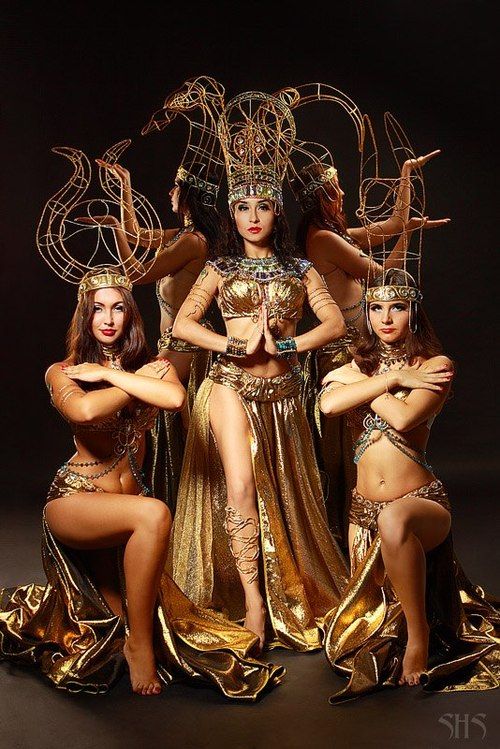 Instead, it was born out of the negotiation between local practices and foreign fascination, in a process that allowed imported influence to remodel traditions. Dancers captured the imagination of 19th-century travelers who came in droves to see them. Their first claim to fame arose in this context of European Orientalism, which applied dancers’ sensuality to the whole female population and fueled tropes about the East as a place of transgression and immorality.
Instead, it was born out of the negotiation between local practices and foreign fascination, in a process that allowed imported influence to remodel traditions. Dancers captured the imagination of 19th-century travelers who came in droves to see them. Their first claim to fame arose in this context of European Orientalism, which applied dancers’ sensuality to the whole female population and fueled tropes about the East as a place of transgression and immorality.
Twentieth-century cabarets, often owned by Greeks, Italians or Armenians, codified and refined the dance. They incorporated ballet techniques and Western-style orchestras to create the modern genre still practiced today. Elements now viewed as inseparable from the Egyptian art form, like the two-piece costumes or veils, never hailed from local folklore but were actually imported from Hollywood and French cabarets by trailblazers like Badia Masabni. Her establishments attracted the Egyptian intelligentsia and foreign clients, and King Farouk himself was part of Casino Badia’s clientele.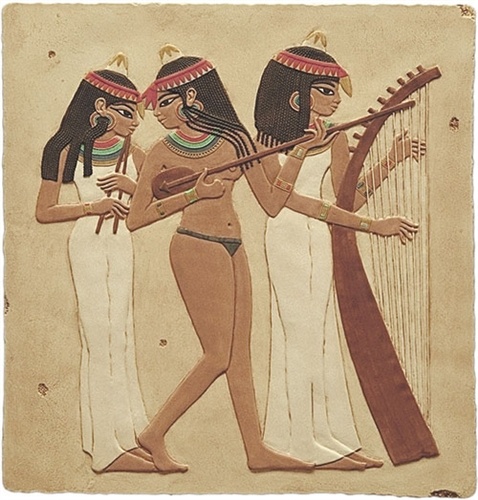 Egypt’s flourishing cinema industry contributed to the burgeoning dancer-star system: Dancers also became actors and reached the rank of pan-Arab superstars.
Egypt’s flourishing cinema industry contributed to the burgeoning dancer-star system: Dancers also became actors and reached the rank of pan-Arab superstars.
The recent increase in foreign dancers has come partly because Egyptian women — who know belly dancing is both adored and deeply judged — no longer want to take on these roles. The golden era ended in the late 1960s, and was followed by a rise of religious conservatism in the public sphere. Dancing stopped being a respectable profession for Egyptian girls, and even became an insult. From the late 1980s onward, entertainers turned to foreign dancers to bring novelty to their shows.
“There is a big difference between old dancers and the new generation,” says Aicha Babacar, who has been teaching belly dancing in Cairo since 2006. “Dancing is in our culture and we love it so much, but when you say to a family your daughter will be a dancer they refuse. All families refuse, they would accept ballet but not belly dancing. Now almost all the dancers are foreigners. It is easy for them to dance in public.”
It is easy for them to dance in public.”
Yet the bad reputation associated with performers does not take away from the dance’s popularity. “I give classes to Egyptian ladies and the turnout is huge, huge numbers,” Babacar says. “We are Egyptians. We love dancing. We just won’t do it in public.”
Instead, Egyptians look fondly to the past for national icons.
“Old Egyptian dancers were more respected; the old generation used to respect dancers more than now. Here in Egypt, the most famous dancers also became actresses,” Babacar says. Yet it is not clear if it was the versatility of past generations’ dancers that earned their audience’s respect or if it was the audience’s respect that enabled this versatility.
One should not romanticize the past. Even the most iconic figures of dance were complex women who never gained full social acceptance. Shafiqa El-Koptiyya (Shafiqa the Copt), one of Egypt’s biggest dancing stars at the end of the 19th century, was disowned by her family early on for her career choice. She chose to highlight her religion as part of her stage name in a bid for acceptance. This private disavowal did not hamper public adoration, and Shafiqa amassed such fame and riches that she was known for her champagne-drinking horses. Tahiya Karioka, whose career spanned decades and who appeared in more than 40 movies, was estranged from her family. Her 14 marriages to men she later called “a shabby lot of bastards” in an interview with the scholar Edward Said never quite fit in with society’s standards. Regardless, she was admired for her public political stances and was given a state funeral after suffering a fatal heart attack in 1999.
She chose to highlight her religion as part of her stage name in a bid for acceptance. This private disavowal did not hamper public adoration, and Shafiqa amassed such fame and riches that she was known for her champagne-drinking horses. Tahiya Karioka, whose career spanned decades and who appeared in more than 40 movies, was estranged from her family. Her 14 marriages to men she later called “a shabby lot of bastards” in an interview with the scholar Edward Said never quite fit in with society’s standards. Regardless, she was admired for her public political stances and was given a state funeral after suffering a fatal heart attack in 1999.
Only a handful of Egyptian stars remain. Among them is Fifi Abdo, 77, who later reinvented herself as an actor and TV anchor. Famous for her energetic personality and trademark catchphrases, she is a national icon and occasionally still dances for her 6 million followers on Instagram. Dina Talaat, 57, is another notable example. Boasting one of the most prestigious careers in the art, she has danced for leaders all over the world.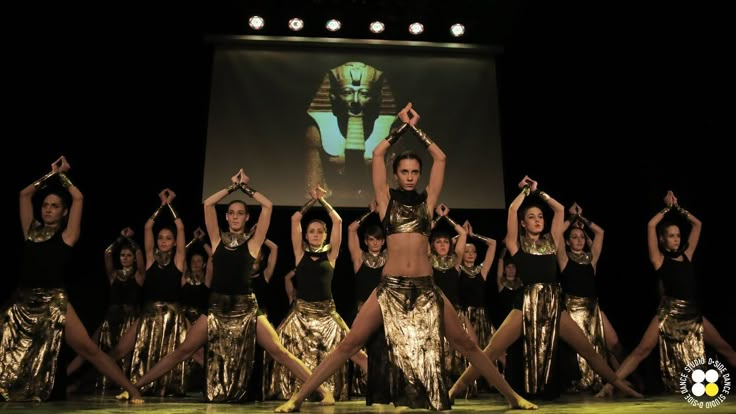 She often speaks of her family’s acceptance of her career choice: She grew up in Italy and earned a degree in philosophy before choosing dance. Both nonetheless paid the price for the ambivalent relationship the Egyptian audience sustains with dancers. Abdo faced regular lawsuits and public condemnation, while Talaat experienced relentless harassment after her ex-husband leaked a sex tape. She was even accused of sexual harassment after young men said their attacks on young girls were provoked by her dancing at an event she did not even attend.
She often speaks of her family’s acceptance of her career choice: She grew up in Italy and earned a degree in philosophy before choosing dance. Both nonetheless paid the price for the ambivalent relationship the Egyptian audience sustains with dancers. Abdo faced regular lawsuits and public condemnation, while Talaat experienced relentless harassment after her ex-husband leaked a sex tape. She was even accused of sexual harassment after young men said their attacks on young girls were provoked by her dancing at an event she did not even attend.
After years of training, performing in Cairo is a crowning achievement for many dancers coming from abroad. Daniela Acevedo, a 32-year-old Chilean dancer who won several international dance competitions, is one such performer. “I danced all over the world, but never was it like in Egypt. The connection with the audience is magical, they understand the art and the music,” she explains. “But before you start dancing, everyone just sees you as a prostitute. It is very strange.”
It is very strange.”
The association between belly dancing and sex work is as old as the first mentions of the art in accounts dating back to the 15th century. The rumors cannot be entirely dismissed, as the lines between dancing and sex work can be porous in cabarets. There, costumes are shorter and moves more explicit, yet these venues can be an obligatory rite of passage for dancers in need of work. Successful dancers are not immune to this: Tejas recalls an incident where an older woman managing dancers in a nightclub was baffled that she refused to give her number to clients, asking, “How else will you make any money?”
Though Cairo is filled with dance enthusiasts, both Egyptian and foreign, these purists are often the harshest critics of the current foreign craze. “I would never go watch a Russian dancer,” says Martine Vey, a 66-year-old French dance enthusiast who set up a guesthouse and studio for dancers coming from all over the world, including China, Japan, India, Italy, and more recently from other countries in East Asia. “Dance is taking a wrong turn. I love the Egyptian dance, with its ancient roots and subtlety without vulgarity. Today we focus too much on technique, and things have become too sexual,” Vey said.
“Dance is taking a wrong turn. I love the Egyptian dance, with its ancient roots and subtlety without vulgarity. Today we focus too much on technique, and things have become too sexual,” Vey said.
In this drive toward hypersexualization, rather than blaming the dancers themselves, Vey sees dance as a regulated outlet for broader sexual frustrations. “The problem comes from the current mindset. Young people are sexually frustrated — there are so many problems around that,” she says. The dancers merely mirror the vision of a society in which women are often sexualized and are consequently potential victims of violence. In Egypt, as elsewhere, harassment of women on the street remains widespread. In 2013, U.N. Women, the United Nations’ entity for gender equality and the empowerment of women, estimated that virtually all Egyptian women were subjected to some form of sexual harassment in their lifetime. This summer, a wave of femicides shook the country. Two students, 21-year-old Nayera Ashraf and 20-year-old Salma Bahgat, were stabbed to death in broad daylight for refusing the advances of their assailants.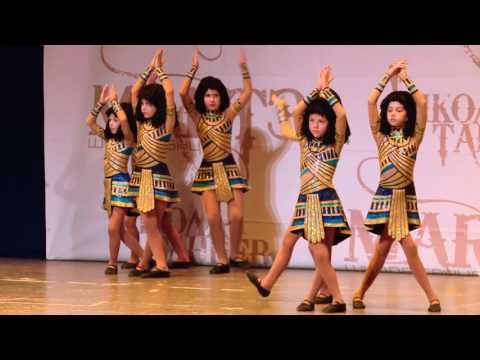
Hypersexualization is now a requirement, something audiences ask for. For Tejas it was nonnegotiable.
“I used to focus a lot on my technique because that’s what they want in Brazil, but here the most important thing is your look,” says Tejas as she points to a full face of makeup and a push-up bra. “A lot of foreigners come, and the market asks for this, especially in clubs. So they put too much extra sexuality.”
Dance is first and foremost a business in Cairo. While popular dancers can demand fees in excess of $1,000 for wedding performances, the profession is not so lucrative for most dancers. The salary for a night of work averages around $25, though this is now being brought down by an ever-increasing influx of dancers ready to work for less. Some venues do not even offer any wages but instead allow dancers to keep half of the tips they collect on stage. Contracts are also a rarity, and venue owners will not hesitate to switch to a dancer of a new nationality if they feel she corresponds to the audience’s demands.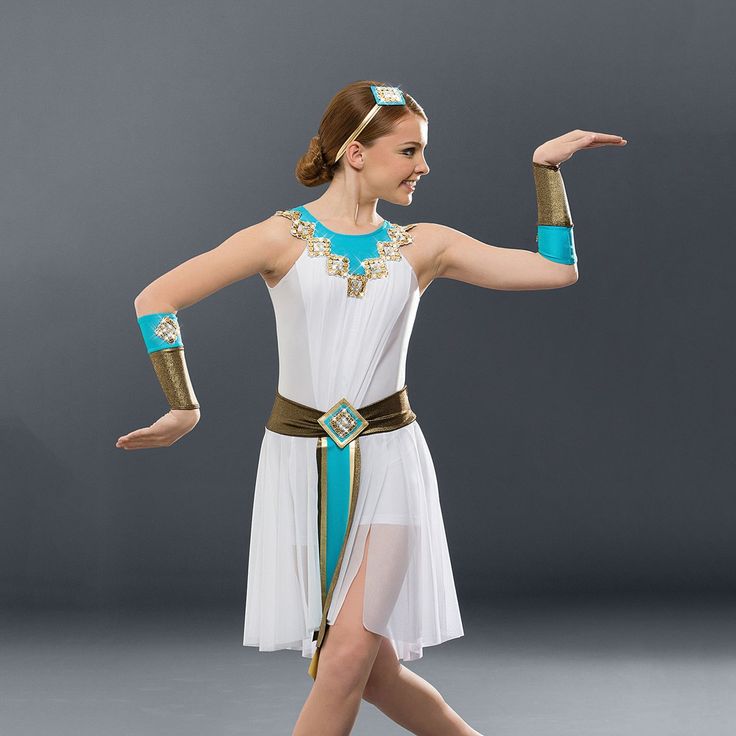
The absence of contracts has created an opportunity for the police, who regularly check dance halls, to demand a cut of the night’s revenue if a dancer’s papers are not in order. Given that work visas are only granted after one year of residence in Egypt, rare are the dancers who can afford to fully conform to the law. To avoid the prospect of deportation, dancers rely on good managers to keep them away from venues that are regularly raided.
Costumes can also be a source of trouble for dancers. A Russian dancer, “Johara,” was arrested in 2018 on charges of “debauchery” for not wearing the shorts that Egyptian law requires as part of her costume. Most dancers I spoke to insisted this kind of case was rare and exceptional, and some even suggested she probably crossed a powerful persona and was arrested on false pretenses. Far from stopping her, Johara’s brush with the law only increased her popularity later on.
Such difficulties can be real obstacles, even for the most passionate dancer. Yet the hardest part is rejection in private, according to Acevedo. “People would mock me or refuse to befriend me because I am a dancer,” she said. “Even people I was friends with would never introduce me to their family or show me on their social media profiles.” Ultimately, foreign dancers have to choose between their profession and building a family life. “I know no man will accept me as I am. I’d have to give up my profession to get married,” says Acevedo. As a result, many plan to go back to their home country after a few years. “I want to come back to Brazil and open a center that mixes dance, yoga and therapy,” says Tejas.
Yet the hardest part is rejection in private, according to Acevedo. “People would mock me or refuse to befriend me because I am a dancer,” she said. “Even people I was friends with would never introduce me to their family or show me on their social media profiles.” Ultimately, foreign dancers have to choose between their profession and building a family life. “I know no man will accept me as I am. I’d have to give up my profession to get married,” says Acevedo. As a result, many plan to go back to their home country after a few years. “I want to come back to Brazil and open a center that mixes dance, yoga and therapy,” says Tejas.
Where foreign dancers narrowly escape, Egyptian dancers are often the targets of traditionalist critics, who use ill-defined laws protecting “family values” and punishing “debauchery” as tools of censorship. The dancers Shakira (Suha Mohammed Ali) and Bardis (Dalia Kamal Youssef) both received six-month sentences in 2015 for “inciting debauchery” in a music video. In 2020, the dancer Sama el-Masry was jailed for three years on the same charges, for pictures and videos on social media that were deemed sexually suggestive. The accusations are not limited to dancers but part of a larger crackdown against artists seen to violate a certain vision of morality. While Tejas escaped prison, mahraganat stars Omar Kamal and Hamo Bika were sentenced to one year in prison and fined for a video in which they danced with her.
In 2020, the dancer Sama el-Masry was jailed for three years on the same charges, for pictures and videos on social media that were deemed sexually suggestive. The accusations are not limited to dancers but part of a larger crackdown against artists seen to violate a certain vision of morality. While Tejas escaped prison, mahraganat stars Omar Kamal and Hamo Bika were sentenced to one year in prison and fined for a video in which they danced with her.
Despite this, some Egyptians remain hopeful, like Babacar, who has taught various generations of Egyptians. “Every 20 to 25 years a different generation comes, and we don’t know what they will accept. Our generation is not accepting of belly dancers, but maybe the next one will be.” Vey, who remains a purist, agrees: “Foreign dancers are a trend. Like all trends, it will end and something else will come.”
Egyptian Saidi Dance - New York Folklore
In this guest blogpost, Dancer and linguist, Torkom Moysesiyan provides a glimpse into the ancient Egyptian dance of Saidi.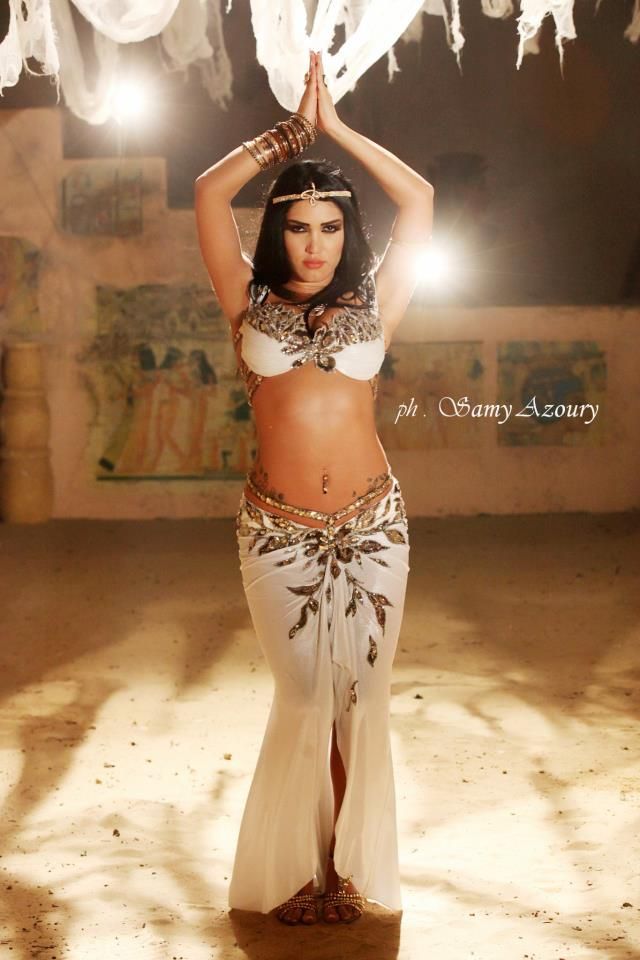 Saidi originates in Upper Egypt and is danced by both women and men.
Saidi originates in Upper Egypt and is danced by both women and men.
“Saidi dates back to ancient Egypt. It is an Egyptian folkloric dance that derives from the Arabic term, aSSa’yeed, meaning “The Upland,” a geographical area located on both sides of the Nile River in Upper Egypt. The Egyptian Saidi is a martial arts dance that has two variations: altahteeb, performed by men and raqs alaSSaya, performed by women. The tahteeb exemplifies masculinity and a battle scene, whereas in the latter women imitate the combative skills celebrated in the tahteeb.
In tahteeb, performers use a heavyweight stick whereas in raqs aSSaya, women use a light or heavyweight cane, often decorated with beads and sequins. The Saidi movements revolve around striking, spinning, rowing, flipping and twirling. Men performing saidi usually wear a long galabiyya with a turban, and women wear a galabiyaa or long dress with a headscarf. Some of the instruments present in saidi are mizmar (an oboe-like reed instrument), rebaba (a stringed instrument), nay (flute) and tabla (a frame drum with a deep sound). The rhythm of saidi is 4/4, and it can be performed either as a solo or group piece.
The rhythm of saidi is 4/4, and it can be performed either as a solo or group piece.
The saidi dance from Upper Egypt, known as tahteeb, is important because it helps us learn about the lives of the ancient Egyptians, particularly, how they used it to prepare for a battlefield. What’s more, the saidi dance was inscribed on the walls of Pharaonic temples and performed with a stick by the ancient Egyptians as a tribute to the Pharaoh.
The late Egyptian dance choreographer Mahmoud Reda, created a theatricalized version of the folkloric saidi dance, known in Arabic as Raqs Alassaya, cane dance, specifically for female dancers, imitating the martial arts movement of the tahtib. Saidi is performed during special occasions such as a wedding, birthday, festival or other related celebrations. Raqs Without Borders, a Middle Eastern and North African dance festival often invites native Egyptian artists in NYC to teach and perform Saidi.”
Follow the link before for an example of the work of Torkom Moysesiyan in a theatricalized version of saidi, adapted for stage, and performed in Rochester in 2017 at “Tales of Arabia,” hosted by Katrina Scott.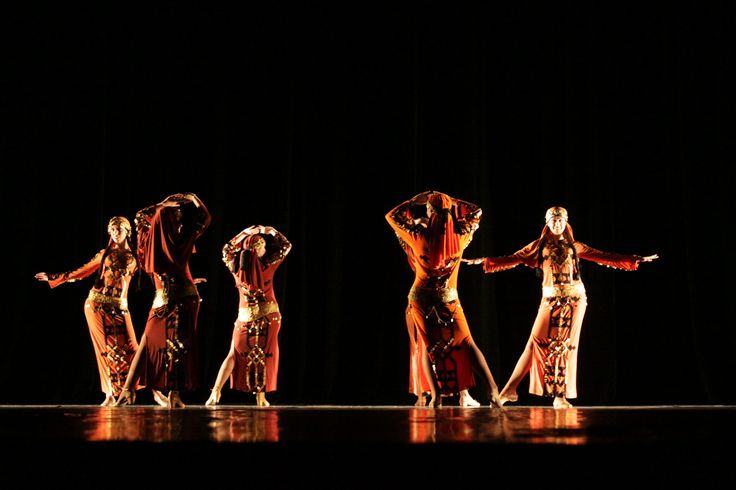 The music is Wala Ya Saidi.
The music is Wala Ya Saidi.
https://www.youtube.com/watch?v=wMn2XJnb_B4
Torkom Movsesiyan wearing a traditional galabeya with a cane, worn by males performing Egyptian saidi dance from a 2018 dance project in NYC, Raqs Revolution. (photo credit: Tevon Miller).
Torkom Moysesiyan is the director of Torkomada, Inc., a multidisciplinary not-for-profit organization, envisions the indigenous and folk dances of the Middle East and North Africa as an important, but neglected diplomatic tool in cultural diplomacy, especially in U.S.-Middle East relations. Headed by Torkom Movsesiyan, a Bulgarian-Armenian trained by dance legends Morocco and Tarik Sultan, Torkomado focuses on Raqs Sharqi, a traditional Egyptian folk dance, popularly known by its misnomer—belly dance. TORKOMADA is a member of UNESCO’s International Dance Council. TORKOMADA currently conducts academic research on dance, builds dance curricula for after-school programs in NYC, and works closely with a foreign language project, where students studying Arabic language can learn it through Middle Eastern music and dance.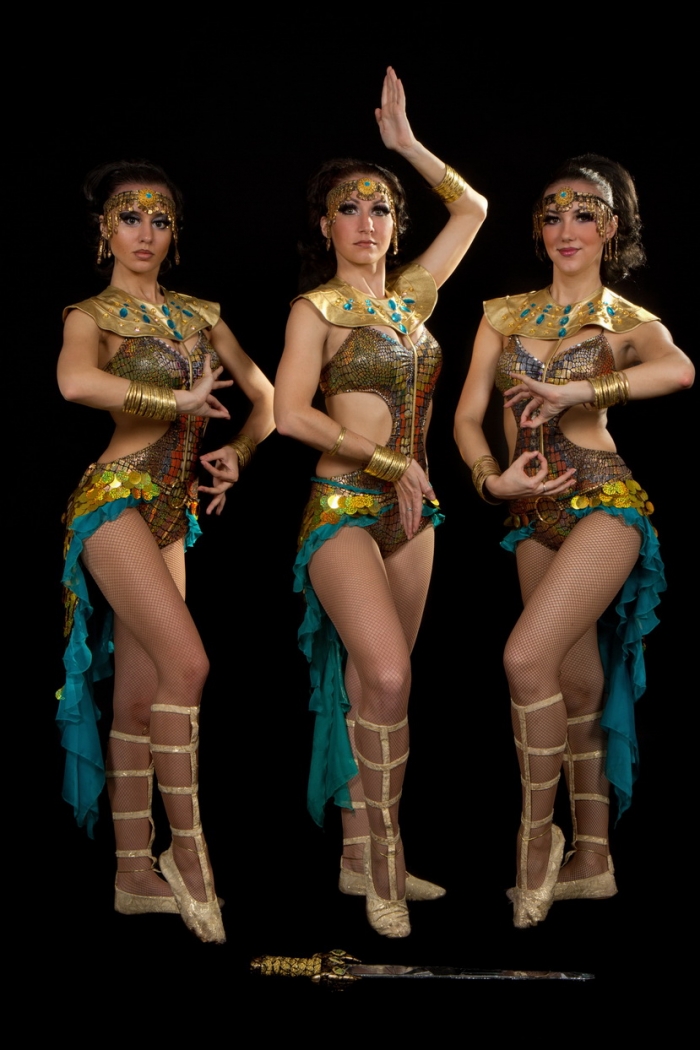
No permission is granted to anyone to print, copy, reproduce, distribute, transmit, store, display in public, alter, or modify any materials, including but not limited to articles, documents, videos, icons, or images, published by Torkom Movsesiyan or TORKOMADA, Inc.
Dances in Ancient Egypt
Home » Themes » Dances
Category: Dances
The culture of Ancient Egypt, in which the level of society was quite high, was saturated with music and dances. The Egyptians were very fond of fun and not a single holiday and not a single event passed without dancing to musical accompaniment.
Egyptian dances
Therefore, we can say with full confidence that dance in ancient Egypt was the main pastime of people of very different social status. Everyone danced - laborers worked to the rhythm of musical instruments and songs, and danced during breaks. The streets of Ancient Egypt were always filled with dancers who entertained and delighted passers-by.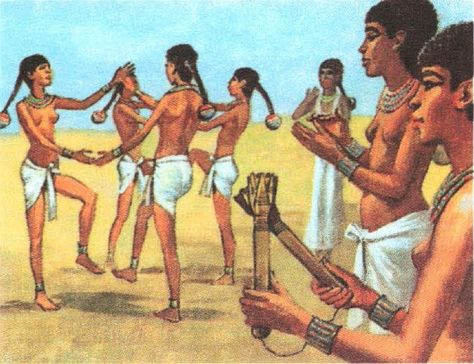 But it is worth noting that high-ranking people did not participate in such dances, but only watched the hired dancers who amused the guests and hosts of the holiday. nine0003
But it is worth noting that high-ranking people did not participate in such dances, but only watched the hired dancers who amused the guests and hosts of the holiday. nine0003
The development of ancient Egyptian dance
In ancient Egypt, the art of dance was highly valued. And, based on the fact that this state was isolated for a long time due to a certain geographical location, the culture of their dance developed independently and without the intervention of other peoples and cultures. Therefore, dances in ancient Egypt were special and unlike anything else. Over the long years of cultural development during the time of the pharaohs, a large number of types of choreography arose: dances for entertainment, harem, ritual, religious and even military dances. This diversity is evidenced by various images of dancing people that have survived to this day. nine0003
Over time, the influence of such neighboring countries as Ethiopia, Nubia, Sudan, Syria and Palestine began to be traced in the dance of Ancient Egypt. Some part of its dance tradition was adopted from each state. In 1500 B.C. in the choreography of Ancient Egypt, even more flexibility, elegance and sophistication appeared, which were introduced by Indian bayadères.
Some part of its dance tradition was adopted from each state. In 1500 B.C. in the choreography of Ancient Egypt, even more flexibility, elegance and sophistication appeared, which were introduced by Indian bayadères.
The most unusual dance in Ancient Egypt is the astronomical dance of the priests, who unraveled the secrets of the stars and foreshadowed fate. The rhythm of their pas embodied the movement of celestial bodies throughout the universe and personified the harmony of the flawless celestial sphere. They performed this dance around a special altar, which symbolized the sun. Each movement had its own meaning and subtext. For example, at first the dancers moved from east to west, which symbolized the movement of the sky, and then from west to east, which personified the movement of the planets. nine0003
Modern choreographic traditions of Egypt differ in many ways from the dances of Ancient Egypt. They have become more perfect, a wide variety of movements has appeared.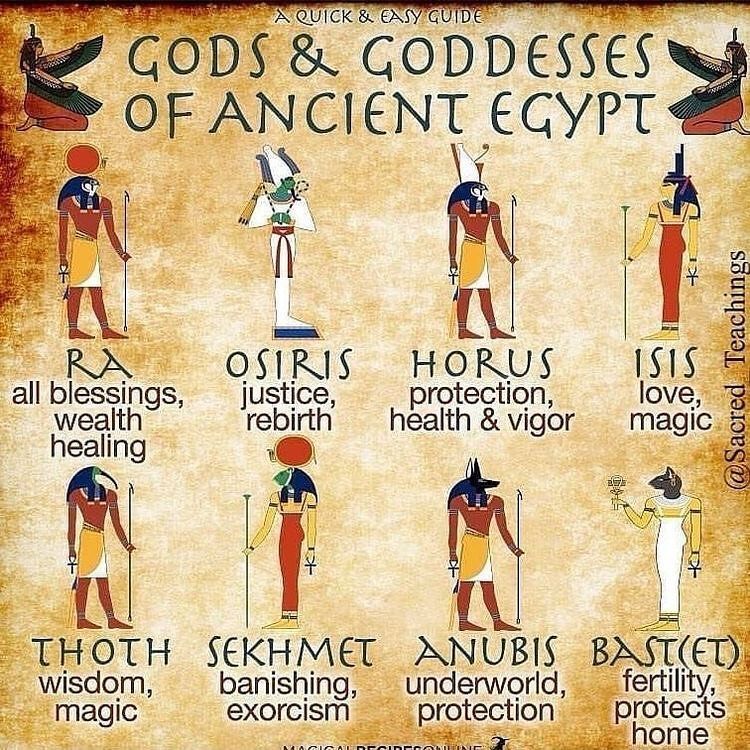 But, despite the expiration of so many centuries, the art of dance of this country has remained unique and unrepeatable. The Egyptians managed to carry through the centuries their traditions and manners, inherent only to their people.
But, despite the expiration of so many centuries, the art of dance of this country has remained unique and unrepeatable. The Egyptians managed to carry through the centuries their traditions and manners, inherent only to their people.
Modern Egyptian dances
Like this article? Share with friends:
Tanura - Egyptian miracle - travel blog about holidays in Belarus
- home
- Blog
- Tanura - Egyptian miracle
February 20, 2018 Author: SKY FLY TRAVEL travel agency nine0003
Today we will tell you about another Egyptian miracle that you just need to see with your own eyes! No, this is not about the pyramids of Giza, not about Cairo and its world-famous museum! We swear: not a single word about pharaohs, dynasties and the Nile!
Do you know what tanura is?! No?! Well, you have definitely heard about the dance with skirts, and if you have ever been to Egypt, you have even seen it!
Tanura means skirt in Arabic.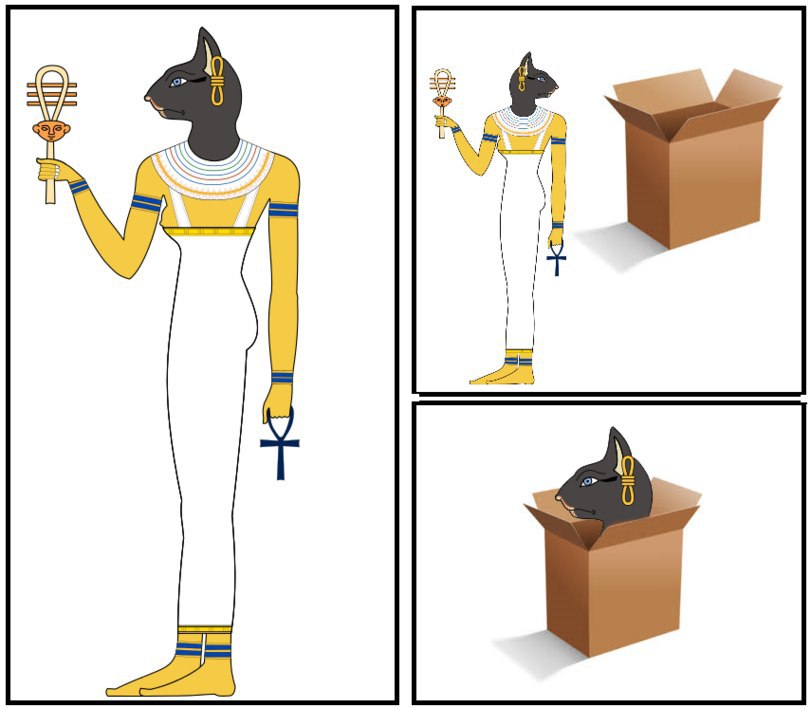 And at the same time, this is an ancient Aab dance, during which the performer spins around its axis, without fail counterclockwise. This dizzying spin around its axis can last from several minutes to several hours! Just imagine how much strength and what preliminary preparation the dancers need. nine0003
And at the same time, this is an ancient Aab dance, during which the performer spins around its axis, without fail counterclockwise. This dizzying spin around its axis can last from several minutes to several hours! Just imagine how much strength and what preliminary preparation the dancers need. nine0003
Tanura is very similar to Turkish sum. In both cases, the dance has a sacred meaning and was originally performed by dervishes - Muslim Sufi monks. Only if the Turkish version of this dance is monochrome: the dancers are always in black and white robes, then the Egyptian dancers are dressed brightly. The pattern on the skirts of Egyptian dancers resembles an ancient mandala - a symbol of the constant cycle of life.
This dance has been known since the 13th century. Once it was danced only by men, and the art was transmitted exclusively from father to son. It was a temple art and only initiates could dance, hence the continuity of the “profession”. Today, as often happens with ancient traditions in countries with developed tourism, tanura has become one of the hallmarks of Egypt in general and tourist Egypt in particular. nine0003
nine0003
By the way, only men dance. True, there are exceptions: there are several "tanurs" in the world, one of them lives in St. Petersburg.
For dancing, men put on several colored skirts over their shirts and trousers - "sun", on their heads - a high red cap. Speaking of the skirts themselves, the mass of one is about 18 kg, and during the dance there are several of them on the performer. Try to spin around with such a “load”! But the whirling lasts from several minutes (at least 15) to several hours. The dancer plunges into a trance, along with him and the audience tuned in a special way. Skirts during whirling move parallel to the earth's surface, this is the first very important sacred moment of the ancient dance. When in the finale the dancer takes off her skirts one by one, this action has a deep philosophical meaning - the change of seasons in nature and, accordingly, the cycle of life. nine0003
Another very important point: during the dance, the dancer raises one hand up, and lowers the other hand down. So he connects heaven and earth.
So he connects heaven and earth.
Third: The dancers always spin counterclockwise. There are two reasons for this: the first - visible - they repeat the movement of pilgrims performing the Hajj around the Kaaba in Mecca. The second is more philosophical: the globe, as you know, is spinning around its axis, but counterclockwise. Which of the characters you like best - choose. But, the essence remains the same. The dancer connects the heavenly and the earthly in the dance. nine0003
If there are several speakers, the main dervish will always be in the center. He is the sun, the rest are the planets. Thus, all together they again unite heaven and earth.
Many believe that tanura is not a dance, but the process of turning abstract concepts into tangible energy, and the dancer is a conductor in this process. It remains only to guess whether he feels the flows thereof. The story of unity with God and nothing else. Dance-prayer.
Of course, we do not claim that the tanura, performed for tourists every time, is loaded with such a meaning, today it is a popular entertainment for tourists, an attraction and a must-have of impressions brought from Egypt. But, if you decide to buy a tour to Egypt, be sure to get acquainted with the ancient dance. nine0003
But, if you decide to buy a tour to Egypt, be sure to get acquainted with the ancient dance. nine0003
It's better to see once than hear a hundred times!
Follow the news of SKY FLY TRAVEL on social networks: Facebook , VK and Instagram
Your SKY FLY TRAVEL
Read Holiday.by
in Telegram
Read Holiday.by
in Viber
Tags: news, travel agencies
An educational project for agency managers from TEZ TOUR started in Minsk
On February 19, an educational project for travel agents from the tour operator TEZ TOUR began in the Fox Hub business space in Minsk.
February 19, 2018
New 2018 - Tunisia with departure from Minsk from INTERCITY
There are many reasons to love Tunisia. Anyone who has already visited this country, probably yearns for the intricacies of Eastern, African and European cultures, theatrical bargaining at the bazaar, the radiant smiles of the hotel staff, white-sand beaches and the blinding turquoise of the Mediterranean Sea.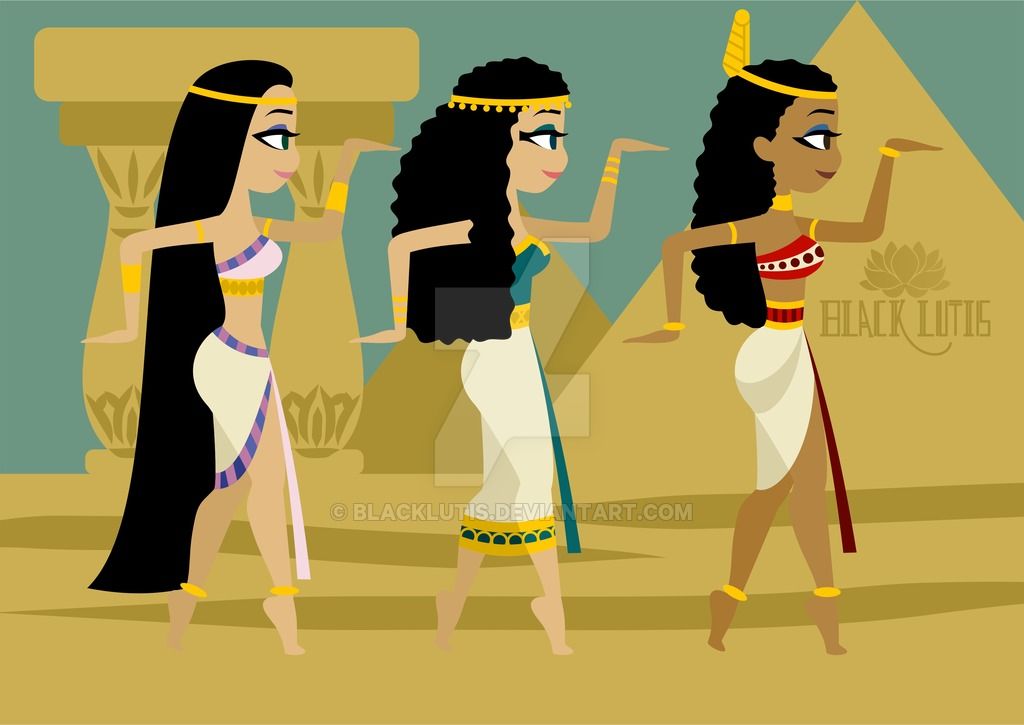 Want to refresh your memories? From June 5, after a long break, Tunisia will again become available for Belarusian tourists: direct flights from Minsk will be operated every 11-12 days until the end of September. And no visas! nine0003
Want to refresh your memories? From June 5, after a long break, Tunisia will again become available for Belarusian tourists: direct flights from Minsk will be operated every 11-12 days until the end of September. And no visas! nine0003
February 19, 2018
Where should you be in the spring? The best flowering options in Europe!
While Belarus is covered with snow and the weather forecast says that this winter is the snowiest in the history of observations, we are making our forecast. We declare that this spring will be the most blooming in Europe. And they made their own calendar so that you can see the brightest and most fragrant gardens.
February 16, 2018
Where to spend the last days of Maslenitsa 2018? nine0003
We offer you an interesting journey to the place where the traditions of the meeting of the Belarusian Maslenitsa are most fully recreated. An excursion with an entertainment program to Nanosy-Novoselye - a unique reserve on the shores of Lake Naroch.